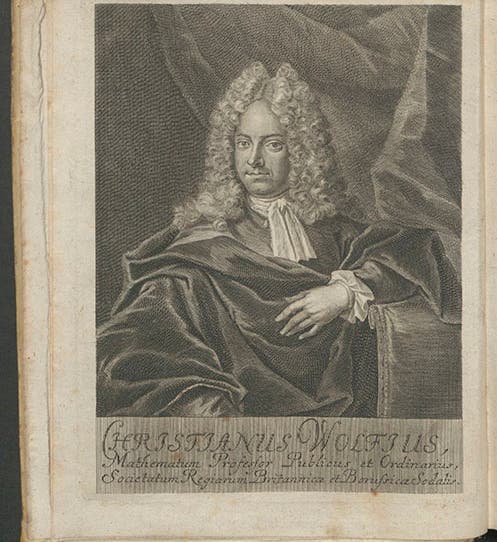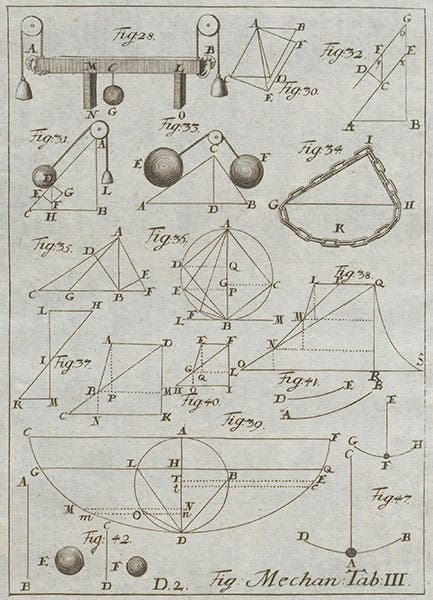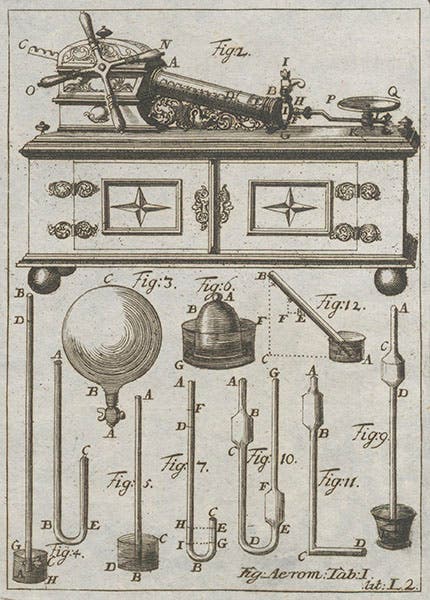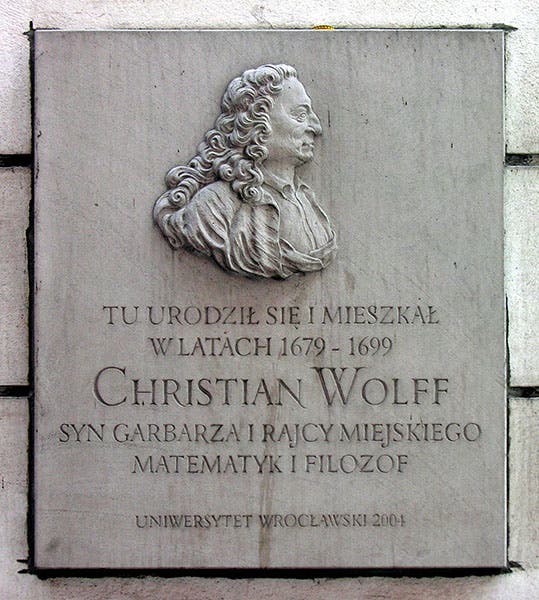Scientist of the Day - Christian Wolff
Christian Wolff, a Silesian/German philosopher, was born Jan. 24, 1679. Wolff spent his first 20 years in Wroclaw, Silesia (now Breslau, Poland), then studied philosophy at Jena and Leipzig. Gottfried Leibniz in Hanover read his thesis and was impressed, and the two began a correspondence that continued until Leibniz died in 1716. With the help of Leibniz, Wolff landed a position in Halle in 1707, and taught there for the next fifteen years. During that time, he published a discouragingly thick scientific encyclopedia, Elementa matheseos universae, that stands about 8 inches tall lying down, and that we happen to have in our collections, along with two other works by Wolff. He does not seem to have done much on the scientific front himself, but he had strong ideas about the methods that scientists ought to be using and the importance of mathmatics.
Wolff was not especially keen on revelation as a source of truth, and he attracted the unwelcome attention of the faculty of theology at Halle, most of whom were Pietist Lutherans, and apparently jealous that Wolff attracted so many students. They managed to convince the king of Prussia, Frederick William I, that Wolff was a dangerous threat to the morality of his students, and the King suddenly decreed in 1723 that Wolff must leave the kingdom in 48 hours or face execution. Wolff did not argue the point but left as ordered, ending up in Marburg, where he was welcomed by nobility and students alike. When Frederick the Great succeeded his father in 1740, he invited Wolff back to Hesse; Wolff accepted, and spent the rest of his career there, dying in 1754.
Wolff has a curious place in the history of science. He is often called the greatest German philosopher between Leibniz and Kant, but if he had any influence on Enlightment science, I have yet to determine its nature. It is said that he was important in introducing Newtonian science into Germany, and Voltaire and Madame du Châtelet in France seem to have praised his work, but otherwise it is hard to pin down any specific influence he might have had. In my opinion, his greatest achievement might have been writing and publishing over 500 book reviews in the Acta Eruditorum, most of which have been placed online by a modern admirer.
All of the images in today's post are from the Elements of 1713, which has an abundance of plates – mostly diagrams, but some that are illustrative, which are the ones we chose here. The book reminds one of the works of the 17th-century Jesuit, Gaspard Schott, and the objects depicted by Wolff are mostly 17th-century as well, including the Musschenbroek-style air pump in use in the 1690s. I was intrigued to see that one of the plates (second image) depicts the “wreath of spheres”, shown here as a continuous chain, which was first proposed by the 16th-century Dutch mathematician Simon Stevin and later became the emblematic device of the Dictionary of Scientific Biography (1970-80). The link is to a detail of a statue of Stevin in Bruges.
There is a plaque honoring Wolff in his hometown of Breslau (sixth image); if there is a plaque or statue in Halle or Marburg, I could not find it.
Dr. William B. Ashworth, Jr., Consultant for the History of Science, Linda Hall Library and Associate Professor emeritus, Department of History, University of Missouri-Kansas City. Comments or corrections are welcome; please direct to ashworthw@umkc.edu.











